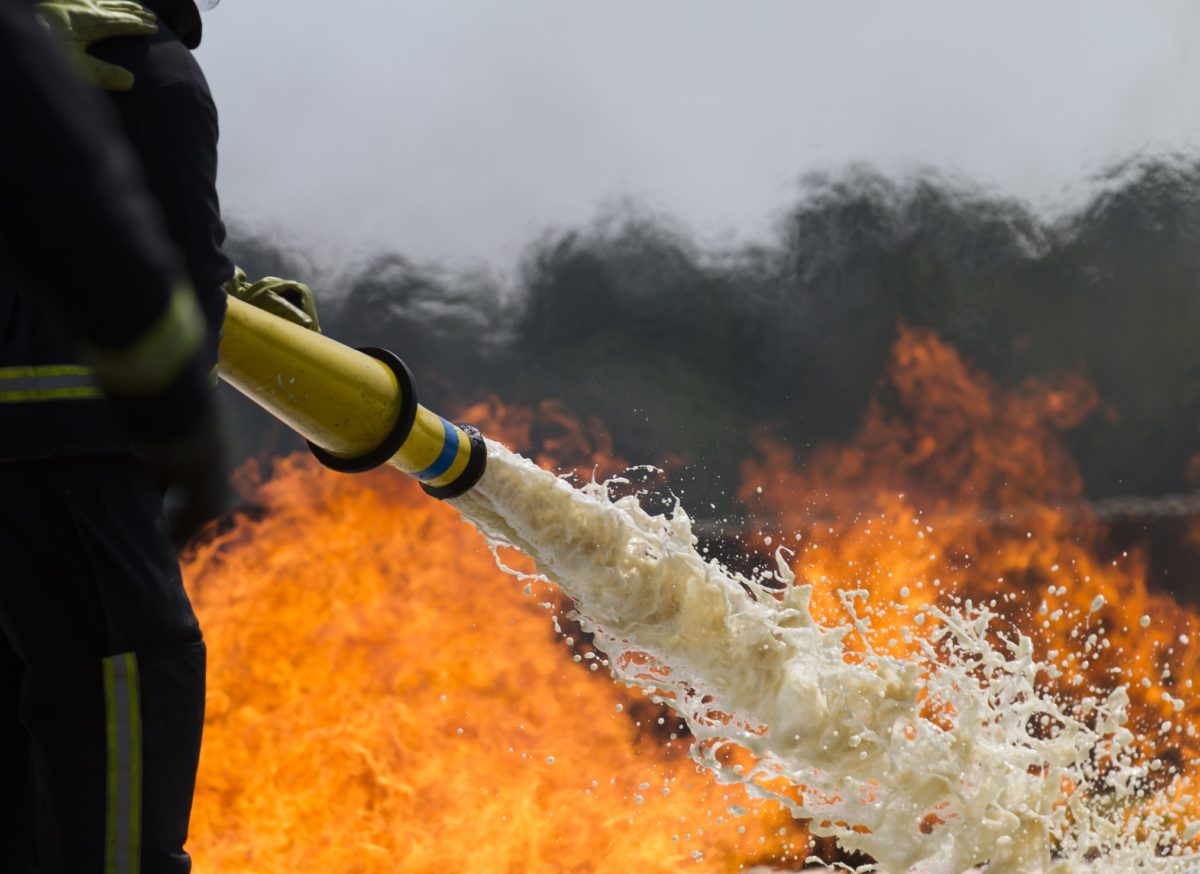
Firefighters often use Aqueous Film Forming Foams (AFFF) to help extinguish difficult-to-fight fires, particularly fires that have petroleum or other flammable liquids. Some AFFF formulations contain a class of chemicals known as perfluorochemicals (PFCs), which has raised safety concerns.
One of the most common PFCs used in firefighting foams is PFOS, a dangerous fluorine-based chemical. The firefighting foam industry is moving away from PFOS as manufacturers have developed firefighting foams that do not use fluorochemicals. However, there continues to be environmental and health concerns about firefighting foams.
Concerns Over AFFF Use?
The concerns revolve around the potential negative impact on the environment from the discharge of foam solutions. The toxicity, biodegradability, persistence, treatability in wastewater treatment plants, and nutrient loading of soils all raise concern for when foam solutions reach natural or domestic water systems.
When PFC-containing AFFF are repeatedly used in one location over a long period of time fire, commonly in training areas, airports, refineries, and chemical plants, the PFCs can move from the foam into soil and then into groundwater. If private or public wells are located nearby, they could be significantly affected.
PFCs can easily build up in the ecosystem and the human body and are extremely toxic. Too much exposure can cause severe health complications such as elevated thyroid hormone levels, prostate cancer, and reproductive issues, just to name a few.
Foam Discharges
A discharge of foam solution would most likely be the result of one or more of the following scenarios:
- Manual firefighting or fuel-blanketing operations
- Training exercises where foam is being used
- Foam equipment system and vehicle tests
- Fixed system releases
It’s highly recommended to collect and discard foam solutions after its use. Besides the foam component itself, the foam is very likely contaminated with the fuel or fuels involved in the fire. Manual containment strategies used for spills involving a hazardous liquid should be employed when conditions and staffing permit.
Training with Foam
The absence of flourosurfactants in training foam means that those foams have a reduced burn-back resistance. This provides an initial vapor barrier in a flammable liquids fire resulting in extinguishment, but that foam blanket will quickly break down.
Training exercises, particularly those using real finished foam, should include specific provisions for the collection of used foam. At a minimum, facilities should have the ability to get the foam solution used to a wastewater treatment facility with granted permission.
For Class B foam concentrates, agent chemistry development efforts seem to have been at a stand still with reliance on existing base technologies. Foam components must continue to evolve in both agent chemistry and firefighting performance with the goal of achieving high performance on flammable and combustible liquids, improved burn-back resistance for firefighter safety and provide many additional years of shelf life over foams derived from protein.
Firefighting operations utilize these foams in order to extinguish fires and save lives, so it is important that these operations do not inadvertently cause greater damage to firefighters, everyday citizens, and the environment. When utilizing foams or other methods of extinguishing fires, it is crucial that firefighting operations have a comprehensive firefighting insurance program that includes General Liability coverage. In our program, we also offer a number of coverage extensions, including Pollution Liability coverage for claims such as these.
About Provident FirePlus
At Provident FirePlus, we offer custom tailored packages to best protect firefighters and volunteer firefighters. We understand the risks that emergency response teams are subjected to on a daily basis, and have worked to serve these dedicated professionals for over 87 years. For more information about our products and policies, we invite you to contact our experts today at (800) 447-0360.

